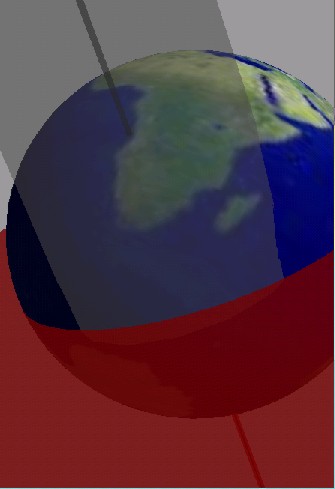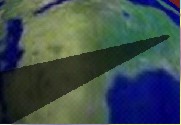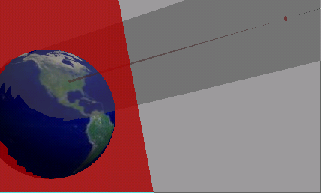Solar Eclipse 3D Viewer- Screen Shots
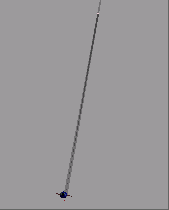 |
Eclipse Viewer Capabilities
The eclipse viewer shows a scale model of the earth and the moon during a solar eclipse. The correct shadow
geometry and position are emulated, along with the correct rotational position of the earth.
The eclipse viewer allows you to fly in real-time to any point in the earth-moon system to
view the event. You can choose to see any one of several recent eclipses, and can alter the
timescale to speed up or slow down (or play in reverse) any part of the chosen eclipse. The eclipse
in Africa on June 21, 2001 can also be viewed. |
|
You can set an 'observatory dome' at any position on the earth's surface, and then fly
into it to see the eclipse as it would appear from that location. Local circumstances for
the observatory's latitude and longitude are displayed, using the same coding that is in
the eclipse calculator.
Screen shot: last August's eclipse
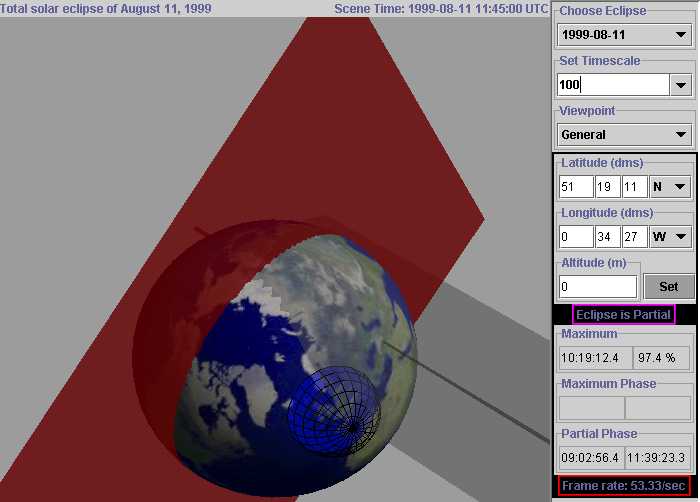
The strange blue carbuncle (even more noticable on the shot below) is the observatory dome,
positioned in this view on top of my house in England.
Note that this is still an early implementation, and there are some bugs and limitations
in the system. In the next version, the options for setting your
viewpoint will be much better, and you will be able to move 'back' far enough to see the whole
sun-earth-moon system. The positional accuracy will be improved (currently, the umbra position
can be up to a few kilometers off due to some simplifications). The calculator does not take these
shortcuts, so the displayed contact times should be accurate to better that .2 seconds.
I will post the java code here as soon as it is stable enough. Please
contact me if you would
like more information about this system.
Screen shot: June 30, 1973
This was one of the longest eclipses possible, at over 7 minutes. Note how long
the umbral shadow is.
(In this shot, the shadow below the fundamental plane is shown with a red
'marker cylinder' in order to make it more visible.)
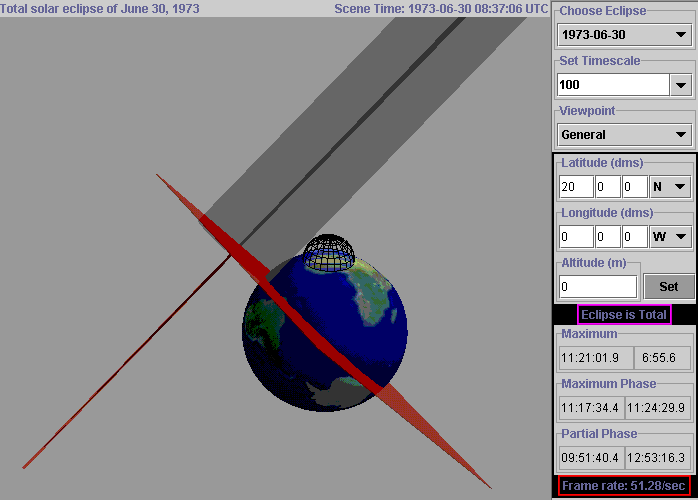
Back to the Home Page.


